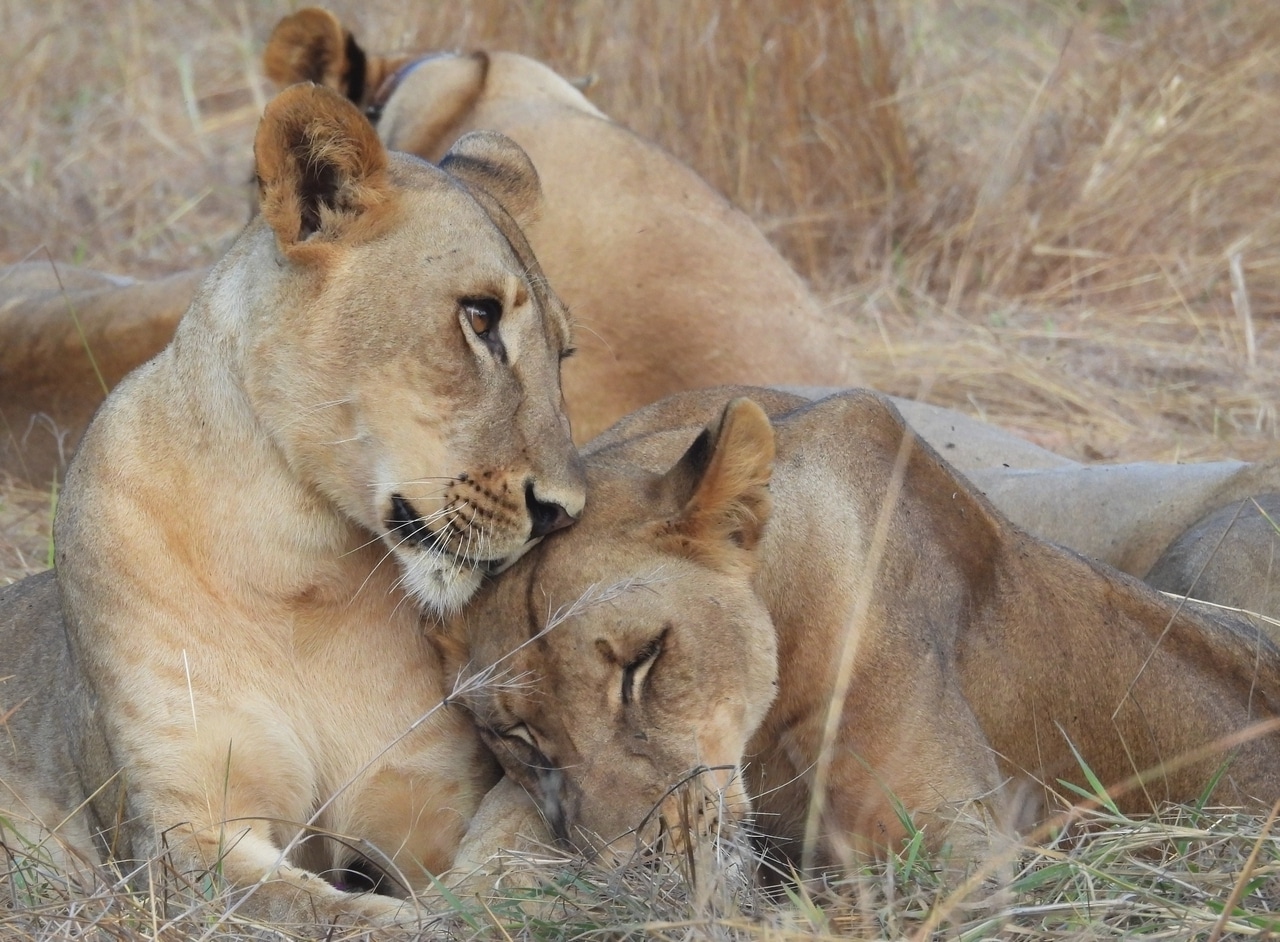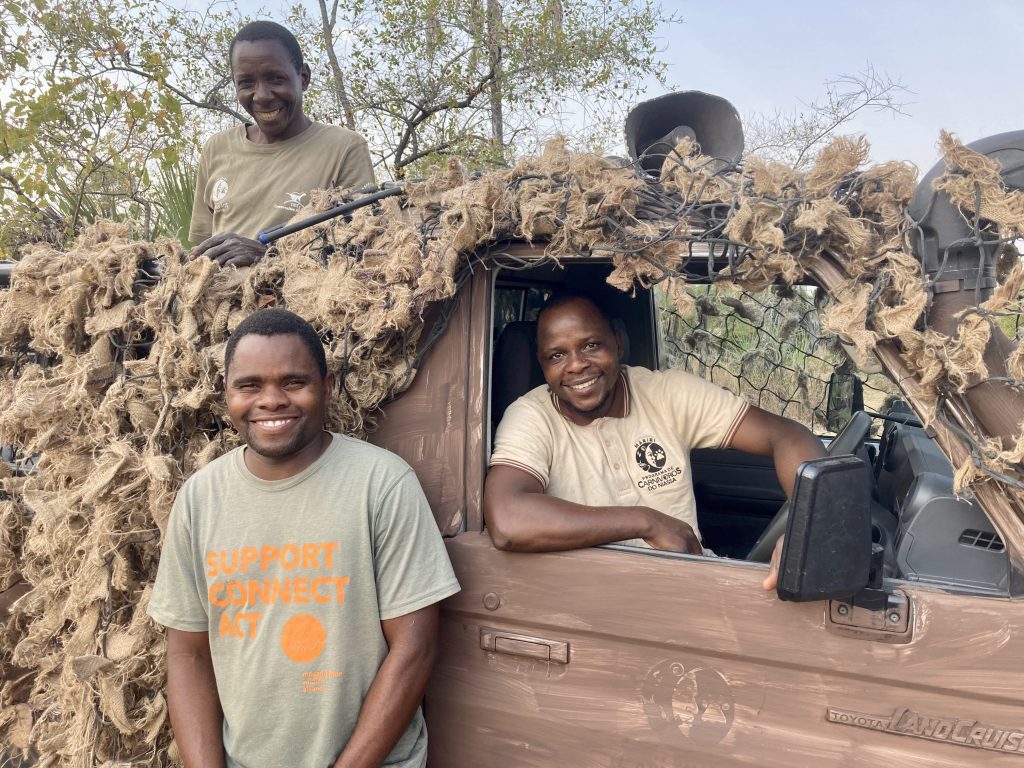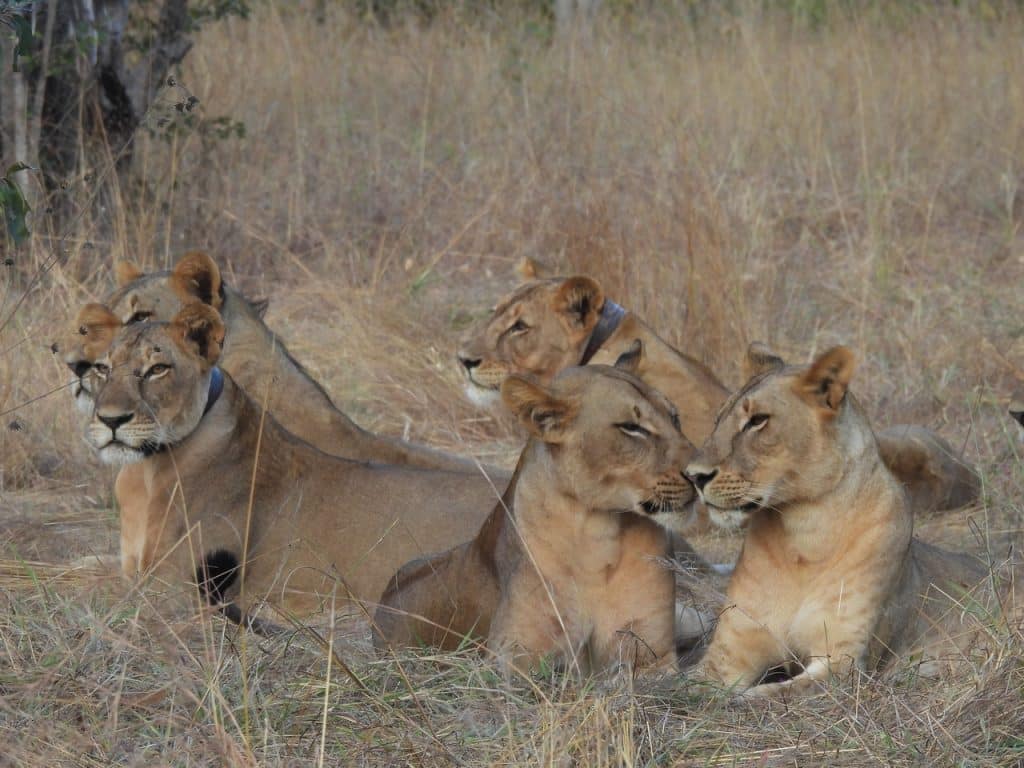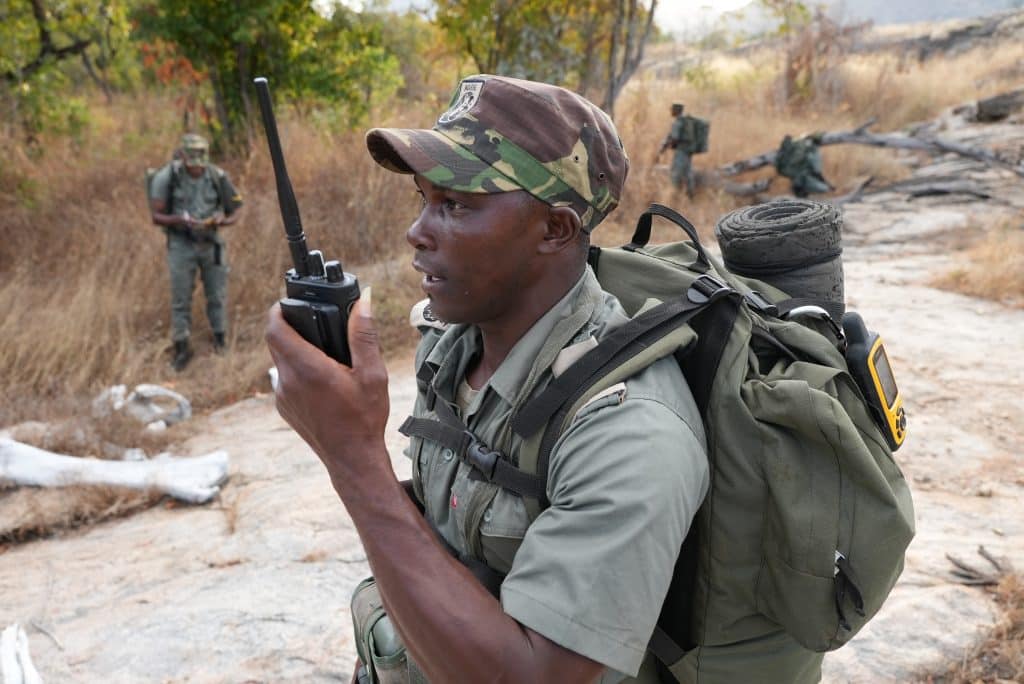At dawn, Eusebio Waiti stepped out of the Land Cruiser he had parked deep in Mozambique’s expansive Niassa Special Reserve. He stretched after a night curled up in the front seat of the battered vehicle, which was camouflaged in children’s brown paint. Blending into the environment is critical when collaring lions, which Eusebio and his team regularly do with veterinarians so Niassa Lion Project (NLP) can track pride movements and protect lions from increased poacher activity. When Eusebio returned to the front seat, he told his colleague, Samuel Massingir, to turn on the loudspeaker. As Samuel flicked the switch, the recording of pig squeals meant to attract hungry lions heralded the start of the team’s long day.
Niassa Special Reserve is larger than Switzerland and houses between 800 and 1,000 lions, one of Africa’s largest lion populations. Since 2003, NLP has protected Niassa’s lions and other carnivores in partnership with Mozambique’s National Administration of Conservation Areas. For much of that time, Eusebio and Samuel have led NLP’s lion monitoring and collaring program. These satellite collars generate tracking data that NLP shares with anti-poaching units in 15 of the Reserve’s intensive protection zones. Their patrols keep Niassa safe by removing bushmeat snares that accidentally kill lions. But in recent years, a new threat has emerged that deliberately targets the big cats.
Poachers have been poisoning lions to harvest their teeth, paws, and claws for illegally trafficked trinkets. NLP’s community wildlife guardians first noticed an increase in lion deaths in 2015, and Mozambique has since become a hotspot for the illegal lion body part trade. To fight this rising threat and stabilize the lion population, NLP began their Lion Coalition project to align Reserve management, tourism operators, and all 47 of Niassa’s villages around a common objective—stopping the illegal killing of lions. Every summer, Eusebio and Samuel’s team survey Niassa to locate new prides. When they do, they assist veterinarians in collaring lions, begin tracking their movements, and inform each zone’s anti-poaching unit where the lions go so they can remove snares and poisoned animal carcasses in those areas.
Collaring lions takes tremendous ingenuity and patience. Eusebio and Samuel’s team travel extreme distances across Niassa’s vast woodlands, living and sleeping in their vehicles for days. To draw lions to them, they play recordings of distressed prey species over loudspeakers mounted on the vehicles. Lions can hear these calls from several miles away, and when one eventually strolls up to their location, a veterinarian darts it from inside the truck. Once the lion is sedated, Eusebio and Samuel’s team collar it and then wait until it wakes up and rejoins its pride. They then track that pride’s real-time movements using a mobile app, allowing NLP and the anti-poaching units to address threats wherever they go. To date, NLP has collared over 80 lions and currently monitors 16 prides throughout Niassa.
As Eusebio watched the lion approach their truck after enduring two hours of pig squealing, Samuel prepared the next collar. Their dedication and NLP’s collaboration with Reserve management and their partners are disrupting the efforts of wildlife criminals in Niassa and protecting lions in this important stronghold.




3 Comments